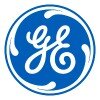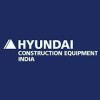
i
Seinumero
Nirman
Filter interviews by
Seinumero Nirman Interview Questions and Answers
10 Interview questions
Throttle governing controls flow rate by adjusting the size of the opening, while nozzle governing controls flow rate by changing the pressure at the nozzle outlet.
Throttle governing involves adjusting the size of the opening through which the fluid flows, controlling the flow rate.
Nozzle governing involves changing the pressure at the nozzle outlet to control the flow rate.
Throttle governing is commonly used in c...
Types of flow include laminar flow, turbulent flow, and transitional flow.
Laminar flow: smooth and orderly flow with parallel layers of fluid moving in the same direction.
Turbulent flow: chaotic and irregular flow with mixing of fluid particles in all directions.
Transitional flow: a mix of laminar and turbulent flow, often occurring during a transition phase.
Examples: Laminar flow in a straight pipe, turbulent flo...
CNC stands for Computer Numerical Control, a technology used in manufacturing processes to control machining tools and 3D printers.
CNC machines are programmed using a code called G-code, which controls the movement and operation of the machine.
CNC machines can be used for cutting, milling, drilling, and other manufacturing processes.
CNC machines offer high precision and repeatability in production.
Examples of CNC ...
Yes, I am familiar with numerical calculations like converting mm into microns.
Numerical calculations involve performing mathematical operations on numbers.
Conversion of mm into microns requires multiplying the value in mm by 1000.
For example, if you have a measurement of 5 mm, it can be converted to microns by multiplying it by 1000, resulting in 5000 microns.
Yes, I have experience operating CNC, VMC, and HMC machines.
I have operated CNC machines for 3 years in my previous job.
I am familiar with programming and setting up CNC machines.
I have experience operating both vertical and horizontal machining centers (VMC and HMC).
I have worked with various materials such as metal, plastic, and wood.
I am skilled in reading and interpreting technical drawings and blueprints.
Yes, I know CNC machine.
I have experience in operating CNC machines.
I am familiar with programming and setting up CNC machines.
I have worked with various types of CNC machines such as milling machines, lathes, and routers.
I am knowledgeable in reading and interpreting blueprints and schematics.
I am skilled in troubleshooting and maintaining CNC machines.
For example, I have operated a CNC milling machine to produce...
Yes, I am able to operate measurement gauges.
I have experience operating various measurement gauges such as calipers, micrometers, and height gauges.
I am skilled in accurately measuring dimensions and tolerances using these gauges.
I can interpret measurement readings and make necessary adjustments to ensure precision in machining processes.
I am familiar with different types of gauges used in CNC machining, includi...
Yes, G-code and M-codes are programming languages used in CNC machines to control their movements and functions.
G-code is a language used to control the movements and positions of the CNC machine.
M-codes are used to control various machine functions like turning on/off the spindle, coolant, etc.
G-code and M-codes are written in a specific format and are executed by the CNC machine.
Example of G-code: G01 X10 Y20 Z3...
Types of pumps include centrifugal, reciprocating, and rotary pumps.
Centrifugal pumps use a rotating impeller to increase the pressure of a fluid.
Reciprocating pumps use a piston or diaphragm to move fluid through a system.
Rotary pumps use rotating mechanisms to displace fluid, such as gear, vane, and screw pumps.
Gcode and Mcode are machine codes used in CNC machines, while vernier micrometer measurements are used for precise measurements in machining.
Gcode and Mcode are used to control the movements and operations of CNC machines.
Vernier micrometer measurements are used for precise measurements in machining processes.
Conversion between Gcode, Mcode, and vernier micrometer measurements may involve mathematical calculations...
Seinumero Nirman Interview Experiences
10 interviews found
(5 Questions)
- Q1. Types of pumps and explain the pump
- Ans.
Types of pumps include centrifugal, reciprocating, and rotary pumps.
Centrifugal pumps use a rotating impeller to increase the pressure of a fluid.
Reciprocating pumps use a piston or diaphragm to move fluid through a system.
Rotary pumps use rotating mechanisms to displace fluid, such as gear, vane, and screw pumps.
- Q2. Types of flow and explain the the flow
- Ans.
Types of flow include laminar flow, turbulent flow, and transitional flow.
Laminar flow: smooth and orderly flow with parallel layers of fluid moving in the same direction.
Turbulent flow: chaotic and irregular flow with mixing of fluid particles in all directions.
Transitional flow: a mix of laminar and turbulent flow, often occurring during a transition phase.
Examples: Laminar flow in a straight pipe, turbulent flow in ...
- Q3. Tell me something about the CNC
- Ans.
CNC stands for Computer Numerical Control, a technology used in manufacturing processes to control machining tools and 3D printers.
CNC machines are programmed using a code called G-code, which controls the movement and operation of the machine.
CNC machines can be used for cutting, milling, drilling, and other manufacturing processes.
CNC machines offer high precision and repeatability in production.
Examples of CNC machi...
- Q4. Difference between throttle governing and nozzle governing
- Ans.
Throttle governing controls flow rate by adjusting the size of the opening, while nozzle governing controls flow rate by changing the pressure at the nozzle outlet.
Throttle governing involves adjusting the size of the opening through which the fluid flows, controlling the flow rate.
Nozzle governing involves changing the pressure at the nozzle outlet to control the flow rate.
Throttle governing is commonly used in carbur...
- Q5. Difference between CNCand VMC
- Ans.
CNC stands for Computer Numerical Control and is a general term for a system that controls the functions of a machine tool. VMC stands for Vertical Machining Center and is a specific type of CNC machine used for milling operations.
CNC is a general term for any machine tool controlled by a computer, while VMC specifically refers to a vertical milling machine.
VMC machines are typically used for milling operations, while ...
- Q1. Casual Quality related Quality like 7 qc tools and spc and msa
- Q2. APQP,PPAP, Continue Improvement
I appeared for an interview in Nov 2024, where I was asked the following questions.
- Q1. Knowledge about CNC and VMC
- Q2. Experience in difference fields
- Ans.
I have diverse experience across various fields, enhancing my adaptability and problem-solving skills in production management.
Manufacturing: Managed a team in a factory setting, improving production efficiency by 20%.
Logistics: Coordinated supply chain operations, reducing delivery times by 15%.
Quality Control: Implemented quality assurance protocols that decreased defects by 30%.
Healthcare: Oversaw production process...
I applied via Company Website and was interviewed in Dec 2023. There was 1 interview round.
(3 Questions)
- Q1. Quality releted work question
- Q2. Guages , drawing releted
- Q3. Previous comapany related question
Interview Preparation Tips
I applied via Job Portal
(1 Question)
- Q1. Gcode Mcode vernier micrometer measurement conversion
- Ans.
Gcode and Mcode are machine codes used in CNC machines, while vernier micrometer measurements are used for precise measurements in machining.
Gcode and Mcode are used to control the movements and operations of CNC machines.
Vernier micrometer measurements are used for precise measurements in machining processes.
Conversion between Gcode, Mcode, and vernier micrometer measurements may involve mathematical calculations and ...
(1 Question)
- Q1. All about machine
I applied via Naukri.com and was interviewed before Jan 2024. There was 1 interview round.
(1 Question)
- Q1. What is the use of Geometric Dimensioning and Tolerancing (GD&T) in applications?
I applied via Referral
(2 Questions)
- Q1. Quality related as Five core tool
- Q2. Why..... Analysis, , Five core tool, Drawing symbol
Interview Preparation Tips
I applied via Walk-in and was interviewed in May 2022. There was 1 interview round.
(1 Question)
- Q1. No interview direct join
Interview Preparation Tips
I applied via Referral and was interviewed in Mar 2021. There were 3 interview rounds.
Interview Questionnaire
9 Questions
- Q1. Do you know CNC machine?
- Q2. Do you know Numerical Calculations like conversation of mm into microns.
- Ans.
Yes, I am familiar with numerical calculations like converting mm into microns.
Numerical calculations involve performing mathematical operations on numbers.
Conversion of mm into microns requires multiplying the value in mm by 1000.
For example, if you have a measurement of 5 mm, it can be converted to microns by multiplying it by 1000, resulting in 5000 microns.
- Q3. Are you able to operate Measurement gauges?
- Ans.
Yes, I am able to operate measurement gauges.
I have experience operating various measurement gauges such as calipers, micrometers, and height gauges.
I am skilled in accurately measuring dimensions and tolerances using these gauges.
I can interpret measurement readings and make necessary adjustments to ensure precision in machining processes.
I am familiar with different types of gauges used in CNC machining, including di...
- Q4. Are you ready to do rotational shifts?
- Ans.
Yes, I am ready to do rotational shifts.
I am flexible and adaptable to different work schedules.
I understand the importance of rotational shifts in maintaining production efficiency.
I have previous experience working in rotational shifts.
I am willing to adjust my personal schedule to accommodate rotational shifts.
- Q5. Do you know G-code, M-Codes?
- Ans.
Yes, G-code and M-codes are programming languages used in CNC machines to control their movements and functions.
G-code is a language used to control the movements and positions of the CNC machine.
M-codes are used to control various machine functions like turning on/off the spindle, coolant, etc.
G-code and M-codes are written in a specific format and are executed by the CNC machine.
Example of G-code: G01 X10 Y20 Z30 F10...
- Q6. Can you do (heavy job) work if required?
- Ans.
Yes, I am capable of doing heavy job work if required.
I have experience in handling heavy machinery and equipment.
I am physically fit and able to lift heavy objects.
I have a strong work ethic and am willing to take on challenging tasks.
I can provide examples of previous heavy job work I have done, such as operating large CNC machines or handling heavy materials.
- Q7. Where do you live? here.
- Ans.
I live in a suburban neighborhood with a close-knit community.
I live in a suburban area with well-maintained houses and gardens.
The neighborhood has a park where families gather for picnics and children play.
There are local shops and restaurants within walking distance.
The area is known for its peaceful and safe environment.
- Q8. Educational Qualifications. ? Minimum Mechanical Diploma is required to join as Operator position.
- Q9. Have you Experience of CNC/VMC/HMC Operating?
- Ans.
Yes, I have experience operating CNC, VMC, and HMC machines.
I have operated CNC machines for 3 years in my previous job.
I am familiar with programming and setting up CNC machines.
I have experience operating both vertical and horizontal machining centers (VMC and HMC).
I have worked with various materials such as metal, plastic, and wood.
I am skilled in reading and interpreting technical drawings and blueprints.
Interview Preparation Tips
Skills evaluated in this interview
I applied via Local city employment agencies and was interviewed before Dec 2020. There were 3 interview rounds.
Interview Questionnaire
1 Question
- Q1. Technical, theory, Operation of machines
Interview Preparation Tips
They ask only related field question .
Nothing to worry.
Easily get jobs if you are worthwhile
Top trending discussions






Seinumero Nirman Interview FAQs
Tell us how to improve this page.
Seinumero Nirman Interviews By Designations
- Seinumero Nirman Quality Engineer Interview Questions
- Seinumero Nirman CNC Machine Operator Interview Questions
- Seinumero Nirman Production Manager Interview Questions
- Seinumero Nirman Quality Inspector Interview Questions
- Seinumero Nirman Operator Interview Questions
- Seinumero Nirman Design Engineer Interview Questions
- Seinumero Nirman QA Engineer Interview Questions
- Seinumero Nirman Machine Operator Interview Questions
- Show more
Interview Questions for Popular Designations
- Senior Executive Interview Questions
- Team Lead Interview Questions
- Software Developer Interview Questions
- Business Analyst Interview Questions
- Sales Executive Interview Questions
- Senior Engineer Interview Questions
- Associate Software Engineer Interview Questions
- Accountant Interview Questions
- Show more
Overall Interview Experience Rating
based on 7 interview experiences
Difficulty level
Duration
Interview Questions from Similar Companies
Seinumero Nirman Reviews and Ratings
based on 90 reviews
Rating in categories
|
Quality Engineer
25
salaries
| ₹2 L/yr - ₹3.5 L/yr |
|
Production Supervisor
24
salaries
| ₹2.2 L/yr - ₹4.4 L/yr |
|
QA Engineer
12
salaries
| ₹2.2 L/yr - ₹4.5 L/yr |
|
Quality Inspector
11
salaries
| ₹2.1 L/yr - ₹3.7 L/yr |
|
Maintenance Engineer
11
salaries
| ₹2.2 L/yr - ₹3.8 L/yr |

Ge India Industrial

V.S.T Tillers Tractors

Gilbarco Veeder Root

HYT Engineering
- Home >
- Interviews >
- Seinumero Nirman Interview Questions












